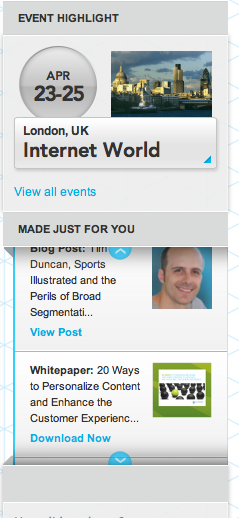I read a really interesting article in The Guardian recently that asked us to all stop thinking of Google+ as yet another social network but as The Matrix of the internet. Having a G+ account is not about participating in the G+ community, its about having a passport (remember that Microsoft terminology, funnily enough released the same year as The Matrix?) that gets stamped everytime you cross the borders of content, data and interactions. Watch a Youtube video, ask directions on a Google map, click on a search result or open a Gmail message and all of these interactions are recorded and used to better personalise your Google-based experiences.
Of course, the jury is out on whether this is a good or bad thing. We continue to tread the line between wanting better experiences and not wanting to have our privacy invaded. But the future is inevitable - we will get more unique interactions from brands. Consumer demand is too strong.
I, like many, am fed up with the impersonal, irrelevant and downright annoying content shoved in my digital face on a daily basis. I've also posted before about the woeful lack of personalisation from companies such as Apple. Especially (in Apple's case) when i've thrown my heart, soul & wallet into becoming a loyal customer. That in essence is behavioural marketing - letting brands tailor the experience within their owned web, email, social & mobile assets to hopefully make the consumer experience just a little less frustrating, and dare I say it, enjoyable.
And it doesn't have to Big Brother/Borg/Vogon-like either. You have enough explicit information to personalise your marketing today, without the need for covert operations. Consider the wealth of behavioural data you have already:
- Email : opens, click thrus, time of day preferred, device used
- Web : views, downloads, visit history, device used (again)
- Social : likes, shares, posts/comments
- eCommerce : cart abandonment, items purchased, previous purchases
- CRM : customer segment, age, marital status, location, preferences
- ...and so on.
So I welcome anything that helps to ease my digital day. Even if we tag it as something as menacing as The Matrix. And nothing could be more gratefully received then on today, my very birthday, a personalised Google Doodle (see below) wishing me Happy Birthday. As I've always said, It's the little things...














